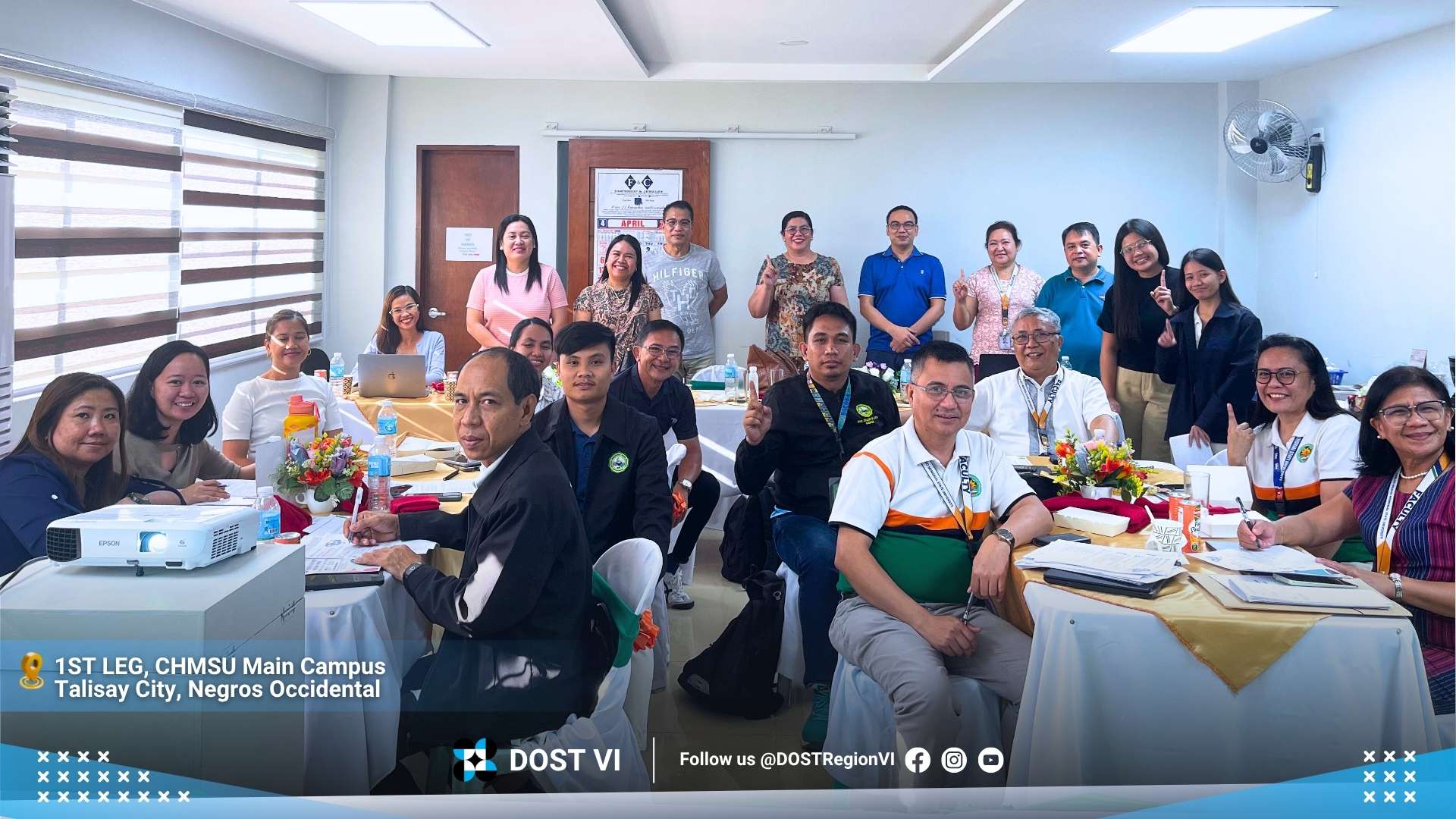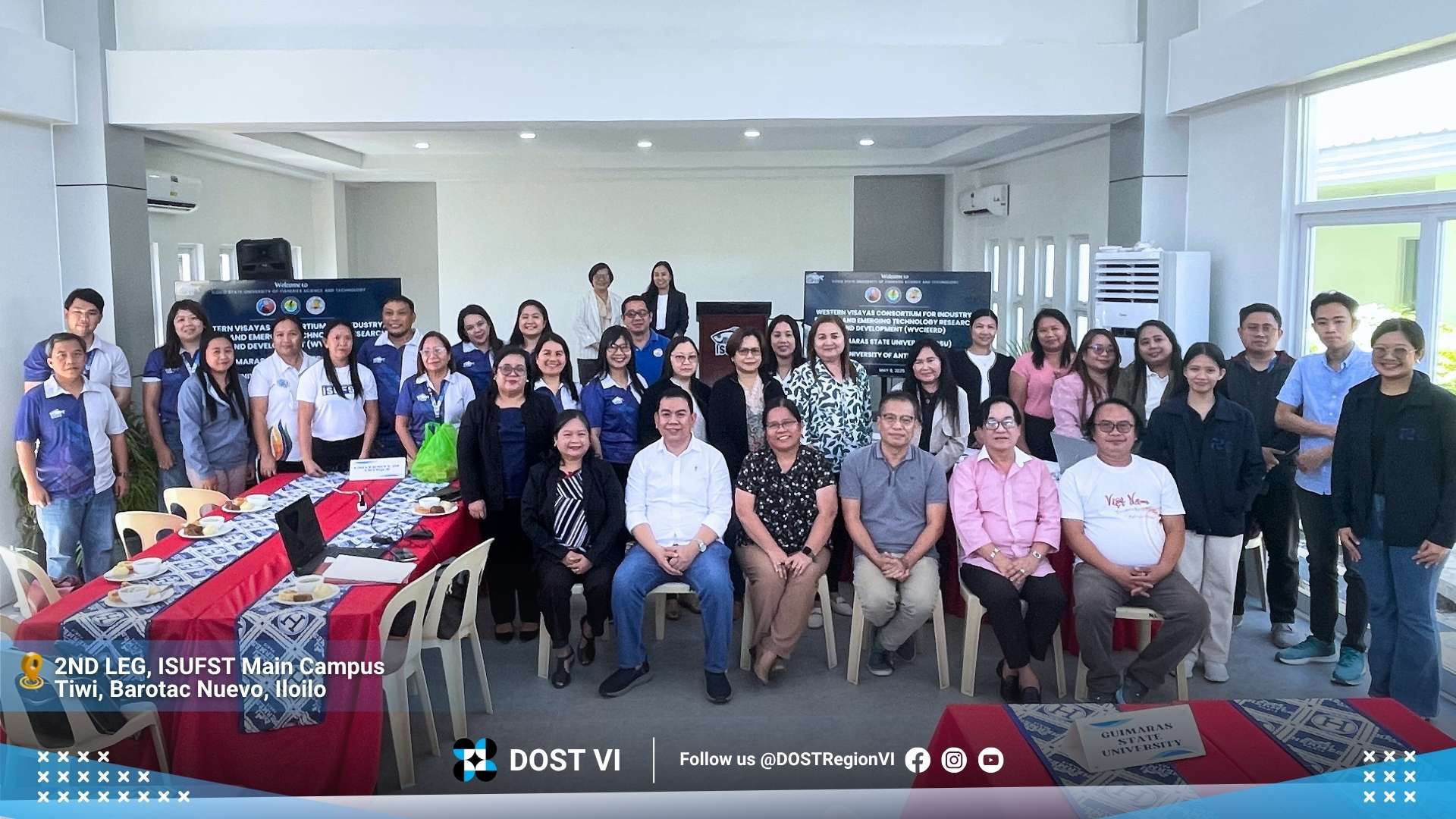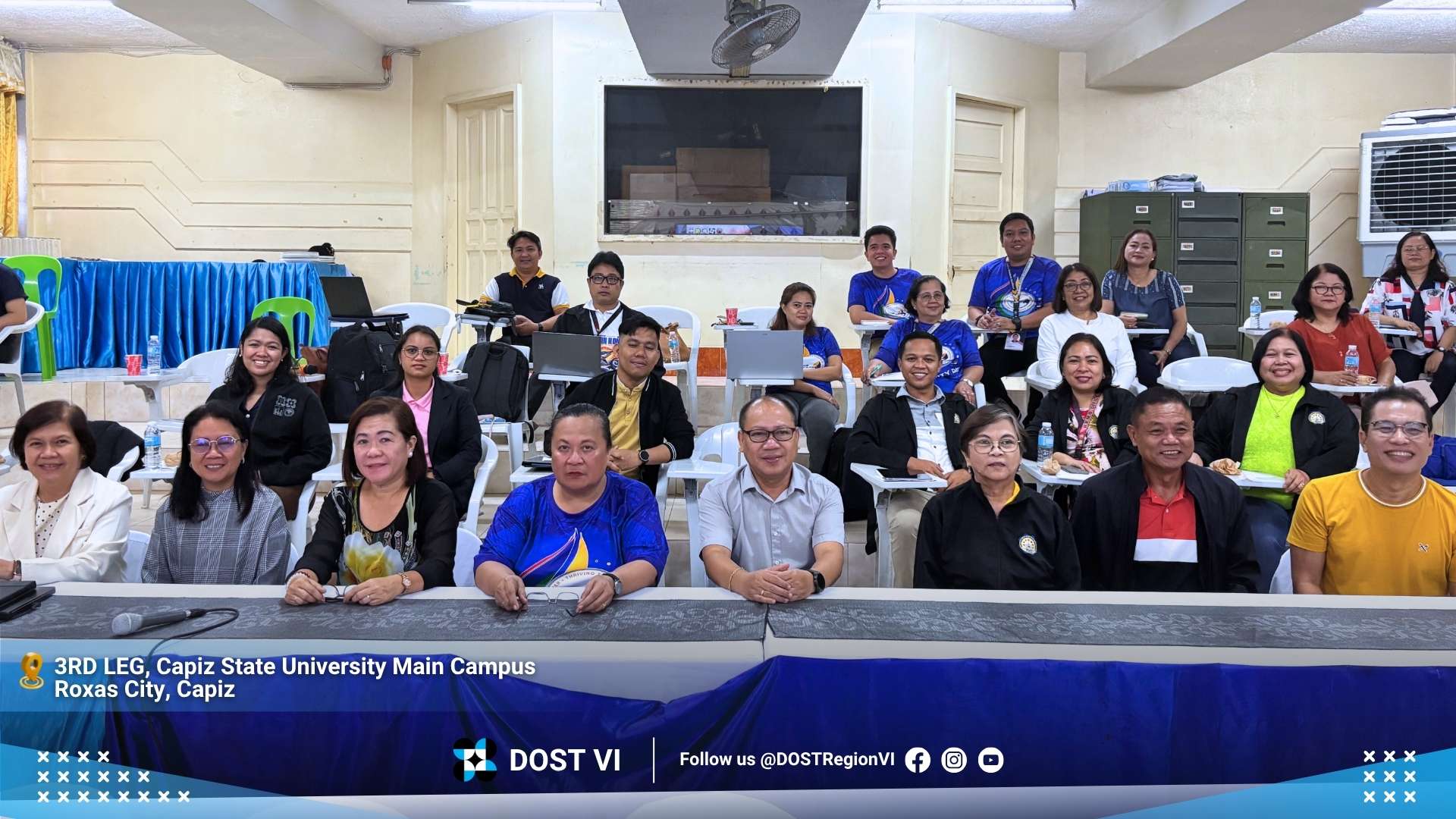In a strategic effort to further the adoption of the Harmonized 18-Unit Faculty Workload Policy, the Western Visayas Consortium for Industry, Energy, and Emerging Technology Research and Development (WVCIEERD) organized a three-leg cluster meeting with its nine (9) member state universities across the region.
The three-leg cluster meeting, led by WVCIEERD Executive Director Dr. Carmelo V. Ambut and facilitated by DOST VI personnel, stems from WVCIEERD’s continued advocacy following the 2024 endorsement of RDC VI Resolution No. 105 through the Regional Research, Development, and Innovation Committee (RRDIC), which supports the implementation of an 18-unit Faculty Workload Policy for State Universities in Western Visayas.
The first leg of the meeting was held on April 8, 2025, and was participated in by Carlos Hilado Memorial State University (CHMSU), Central Philippines State University (CPSU), and the State University of Northern Negros (SUNN) at the CHMSU Main Campus, Talisay City, Negros Occidental.

On May 9, 2025, the second leg was participated in by Iloilo State University of Fisheries Science and Technology (ISUFST), Guimaras State University (GSU), and the University of Antique (UA), and was held at the ISUFST Main Campus in Tiwi, Barotac Nuevo, Iloilo.

The final leg, on the other hand, was conducted on May 23, 2025, at Capiz State University (CapSU) Main Campus in Roxas City, Capiz, gathering officials from CapSU, Aklan State University (ASU), and Northern Iloilo State University (NISU).

Each meeting was attended by key officials from the respective state universities, including Vice Presidents, Directors for Research and Extension, Budget Officers, and Administration and Finance Officers, among others. These meetings aim to foster collaboration and alignment among member institutions toward a unified workload policy wherein each session included a data-driven workload analysis to evaluate the transition from the current 21- or 24-unit loads to the proposed 18-unit workload.
Addressing the persistent issue of low research engagement among faculty members due to heavy teaching loads, this initiative seeks to balance instruction, research, and extension duties, as well as other special functions, thereby empowering faculty members to participate more meaningfully in R&D activities.
Moreover, the data analysis reports prepared by the participating institutions during the meetings will be consolidated and presented during the next Regional Research, Development, and Innovation Committee (RRDIC) regular quarterly meeting to support data-based policy development and further advance this initiative.
Through these efforts, WVCIEERD and DOST VI continue to play a leading role in shaping a dynamic research ecosystem in Western Visayas, paving the way for scientific innovation, enhanced faculty productivity, and sustainable regional development. (RRTMalaga/RDIMS)

